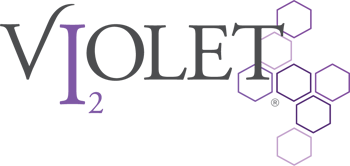The Ultimate Guide to Breast Health
for Women Suffering from PMS Breast Pain
Welcome to Violet Daily’s A to Z guide to women’s breast health!
Read on for all the crucial information you need about PMS breast pain, supplements for breast health, why iodine is the best treatment for breast pain, and of course, the answer to “why do my boobs hurt?”!
Don’t let breast pain stand in your way.
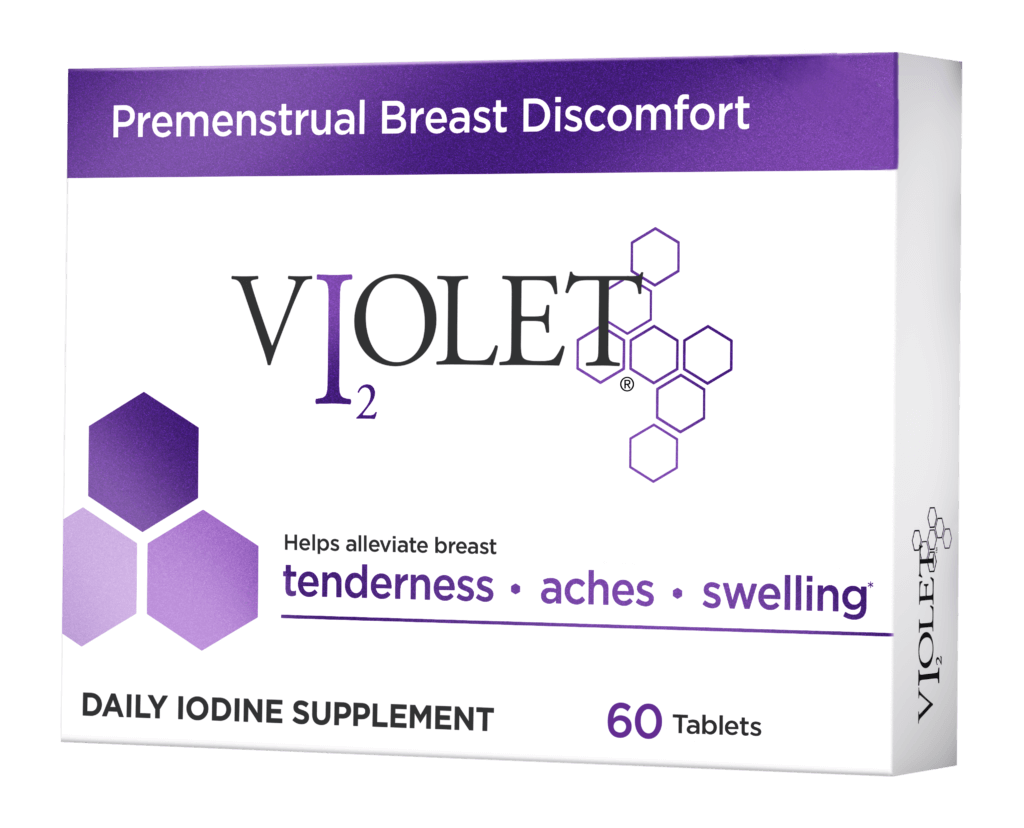
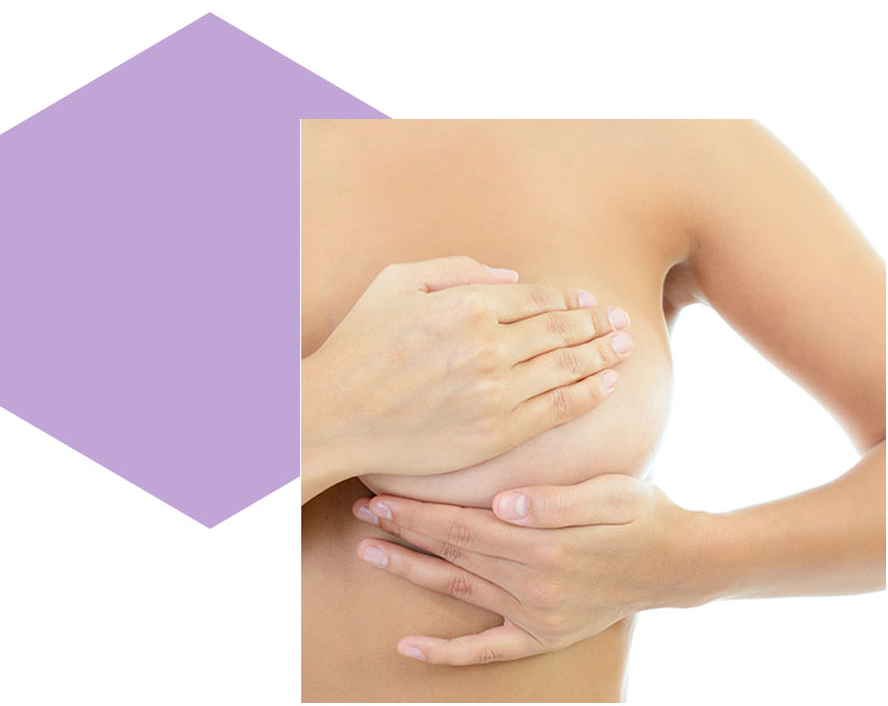
What are PMS BREASTS?
PMS Breasts are the feeling of tenderness, aches, swelling, and heaviness you feel before (and often during) your period. These are some symptoms of fibrocystic breasts, a condition many of us call “PMS breasts” because it coincides with other menstrual-related discomforts. Luckily, there are simple treatment options available. Specifically, there are formulated "PMS breast" supplements known to help.
Common Symptoms
Menstrual-related breast discomfort symptoms vary from woman to woman and month to month, but there are some telltale symptoms that most women can relate to, including:
-
Your breasts become tender to the touch when your period is coming.
-
Your breasts may feel heavy, swollen and lumpy, or even dense and hard. You cringe at the thought of hugging and avoid intimacy.
-
You forego certain types of exercise and change sleeping positions because it hurts or feels uncomfortable.
-
You have to upsize your bra and wear non-restrictive clothing or wear a sports bra all day!
Fortunately, there is finally a solution to help alleviate monthly breast discomfort.*
Menstrual-related breast discomfort is a reality for half of all women ages 15-49.
The generally accepted term to describe breast discomfort caused by the influx of hormones during the menstrual cycle is called fibrocystic breast condition (FBC). Previously referred to as “fibrocystic breast disease,” the terminology was changed because the breast changes are benign (harmless). Healthcare professionals now prefer to refer to the condition as “fibrocystic breasts,” “fibrocystic breast changes” or “fibrocystic breast condition.”
Breast pain is VERY common
Breast discomfort is a common complaint among women of reproductive age and can have many different causes.
Many times, it is the result of puberty, menstruation, pregnancy, or menopause, but in rare instances could be due to something more serious. Benign breast conditions include both cyclic mastalgia and fibrocystic breast condition (FBC).


Cyclic Mastalgia
In cyclic mastalgia pain increases during the menstrual cycle. Women often notice symptoms every month in the days or weeks leading up to, and sometimes through, their periods and experience relief only after their period begins. The discomfort may be in one or both breasts and may range in severity from woman to woman and month to month.
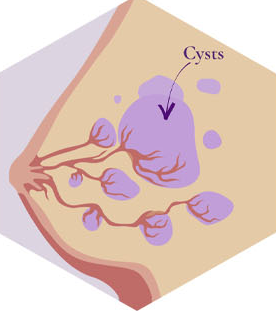
Fibrocystic Breast Condition
The cause of FBC has been linked to the imbalance of hormone levels such as progesterone, estrogen, and prolactin. This imbalance causes cell growth in the breast tissue to exceed natural cell turnover (apoptosis) and becomes more severe with time. The condition tends to start to diminish at menopause. Typical symptoms can include light to severe swelling, aches, tenderness, and heaviness and can be felt anywhere from the breast to the underarm area. Fibrocystic breast condition (FBC) is also characterized by fluid-filled cysts that may become more tender throughout the menstrual cycle. Commonly felt during a breast self-exam, these lumps have a bumpy (cobblestone) or rope-like texture.
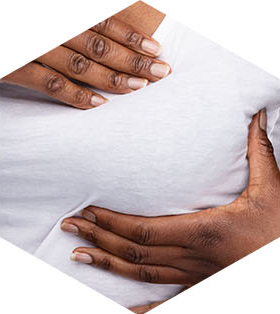
Chronic Breast Pain
Breast pain can be noncyclic, meaning it is not affected by hormones and could be something more serious. If you experience any of the following symptoms, you should contact a physician:
-
Persistent, unexplained breast pain
-
Lumps with the onset of pain or a lump that does not go away after your menstrual period
-
Blood or discharge from the nipple
-
Signs of a breast infection, including redness, rash, pus, or fever
Interested in learning more about how molecular iodine breast supplements can help alleviate menstrual-related breast discomfort? Keep reading for a solution to your monthly discomfort.
Healthy Breasts: Every Day, Every Way
Breast health is essential for all women, regardless of age.
The first step in promoting good breast health is knowing your normal.
Breasts come in all shapes and sizes and can change in many ways throughout your lifetime – through puberty, pregnancy, breastfeeding, menopause, and aging. But even from month to month, your breasts may feel different due to your menstrual cycle. The more aware you become of your breasts’ unique and changing characteristics, the easier it will be for you to pick up on something that needs to be examined.
Breast health isn’t something you should just think about during your annual checkup – instead, make sure your breasts get the attention they deserve every day. Proactively taking care of them is easy and should be part of your overall health regimen. Adding supplements for breast health into your daily routine is a simple and effective solution.
Breast Health Tips
Here are some simple things you can do to promote breast health. (Your girls will thank you!)

The Science Behind Violet Iodine
Vitamins for breast health: A revolution in women’s wellness.
Introducing a daily regimen of the best iodine supplement that alleviates the symptoms you experience with your monthly cycle – like breast tenderness, aches, heaviness, and swelling*. Violet iodine for breast pain doesn’t just mask the discomfort temporarily; it actually promotes better breast health*. When you take a simple breast supplement every day, the result is true relief and reassurance that you’re proactively taking care of your breasts
Get the burden of breast discomfort off your chest. With Violet iodine, you’re just 60 days away from the start of a “new normal” – a life where breast discomfort doesn't get in the way of daily routines.
Iodine deficiency may contribute to fibrocystic breast condition.
A daily regimen of breast supplements for better health.
Staying healthy means finding a routine that works for you– exercise, eating right, getting enough sleep – and being consistent.
One Violet Daily supplement for breast health every day is a safe, simple addition to your routine that can make the difference in how you feel month after month. If your problem is monthly breast pain, then Violet Daily is the solution.
Get started today with this daily iodine supplement for breast pain that delivers real relief from menstrual-related breast discomfort AND helps maintain breast health*.
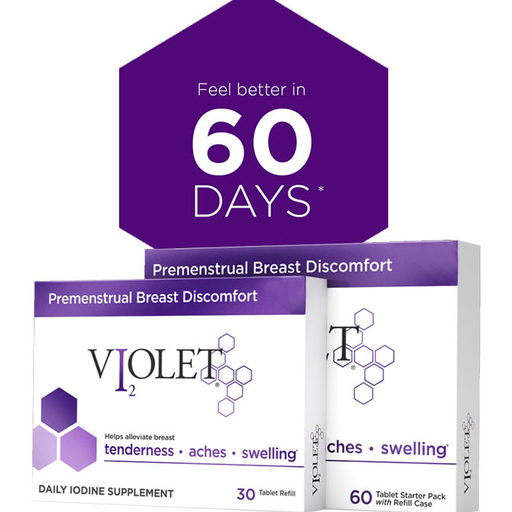
*These statements have not been evaluated by the Food and Drug Administration.
This product is not intended to diagnose, treat, cure or prevent any disease.
